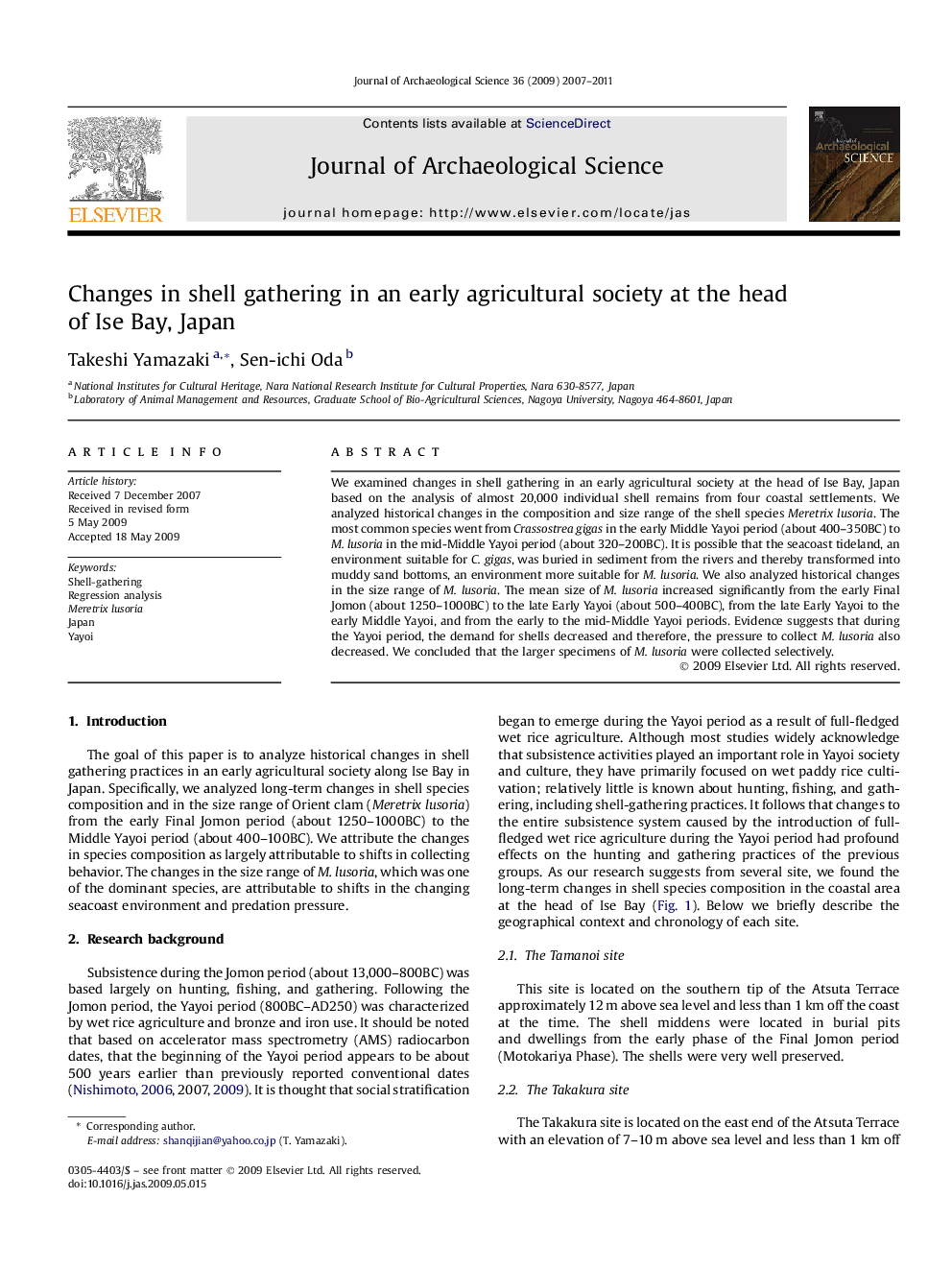| Article ID | Journal | Published Year | Pages | File Type |
|---|---|---|---|---|
| 1036902 | Journal of Archaeological Science | 2011 | 5 Pages |
We examined changes in shell gathering in an early agricultural society at the head of Ise Bay, Japan based on the analysis of almost 20,000 individual shell remains from four coastal settlements. We analyzed historical changes in the composition and size range of the shell species Meretrix lusoria. The most common species went from Crassostrea gigas in the early Middle Yayoi period (about 400–350BC) to M. lusoria in the mid-Middle Yayoi period (about 320–200BC). It is possible that the seacoast tideland, an environment suitable for C. gigas, was buried in sediment from the rivers and thereby transformed into muddy sand bottoms, an environment more suitable for M. lusoria. We also analyzed historical changes in the size range of M. lusoria. The mean size of M. lusoria increased significantly from the early Final Jomon (about 1250–1000BC) to the late Early Yayoi (about 500–400BC), from the late Early Yayoi to the early Middle Yayoi, and from the early to the mid-Middle Yayoi periods. Evidence suggests that during the Yayoi period, the demand for shells decreased and therefore, the pressure to collect M. lusoria also decreased. We concluded that the larger specimens of M. lusoria were collected selectively.
